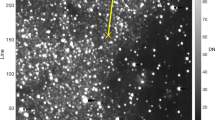Abstract
The first occultation mission in the Korean space program, KOMPSAT-5, is scheduled for launch in 2010. KOMPSAT-5 will have a dual frequency GPS receiver to generate precision orbit determination data and occultation data. The KOMPSAT-5 spacecraft and the characteristics of its occultation payload are described in this paper. An occultation processing system developed by KASI is also introduced.
Similar content being viewed by others
References
Kirchengast G, Fritzer J, Ramsauer J (2002) End-to-end GNSS Occultation Performance Simulator Version 4 (EGOPS4) Software User Manual. Tech. Rep. 3, IGAM/UG Technical Report for ESA/ESTEC, Institute for Geophysics, Astrophysics, and Meteorology, Univ of Graz, Austria
Lee S (2007) Introduction of KOMPSAT-5 Program. 1st AOPOD Workshop 2007, Jeju Island, Korea
Lee W, Chung J, Cho S, Park J, Cho J, Yoon J, Lee J, Chun Y, Lee S (2007) Retrieval of electron density profile for KOMPSAT-5 GPS radio occultation data processing system. J Astron Space Sci 24(4):297–308
Author information
Authors and Affiliations
Corresponding author
Editor information
Editors and Affiliations
Rights and permissions
Copyright information
© 2009 Springer-Verlag Berlin Heidelberg
About this chapter
Cite this chapter
Cho, S., Chung, J., Park, J., Yoon, J., Chun, Y., Lee, S. (2009). Radio Occultation Mission in Korea Multi-Purpose Satellite KOMPSAT-5. In: Steiner, A., Pirscher, B., Foelsche, U., Kirchengast, G. (eds) New Horizons in Occultation Research. Springer, Berlin, Heidelberg. https://doi.org/10.1007/978-3-642-00321-9_22
Download citation
DOI: https://doi.org/10.1007/978-3-642-00321-9_22
Published:
Publisher Name: Springer, Berlin, Heidelberg
Print ISBN: 978-3-642-00320-2
Online ISBN: 978-3-642-00321-9
eBook Packages: Earth and Environmental ScienceEarth and Environmental Science (R0)




